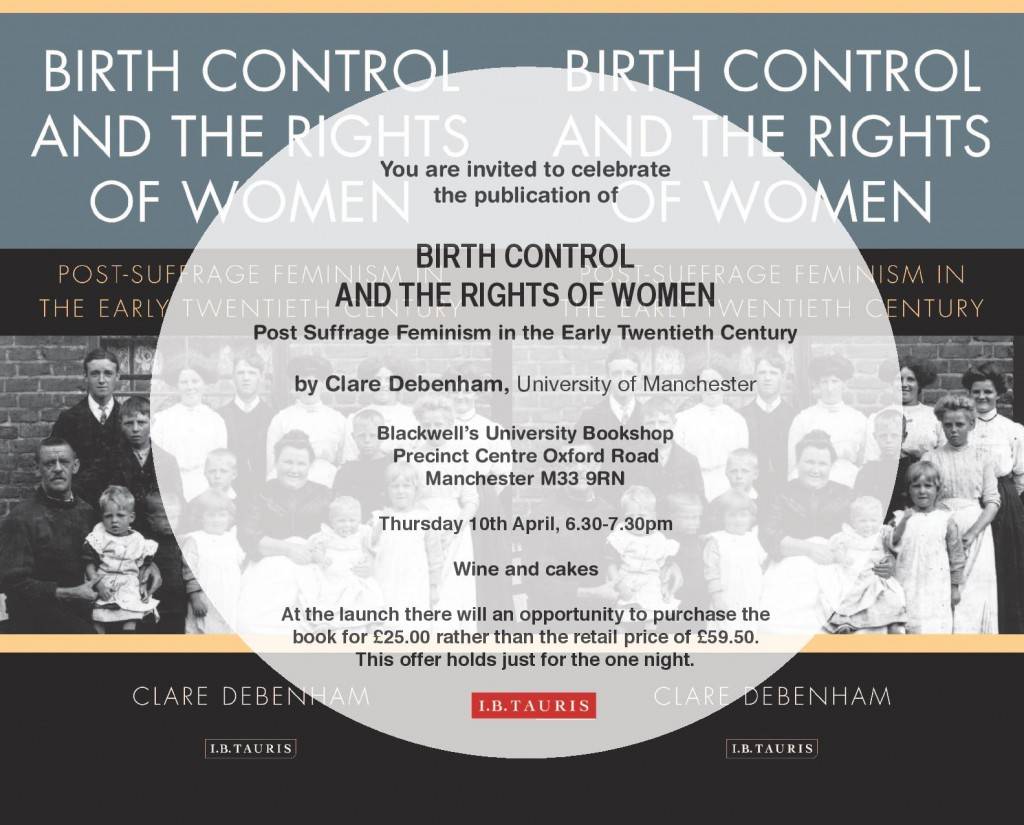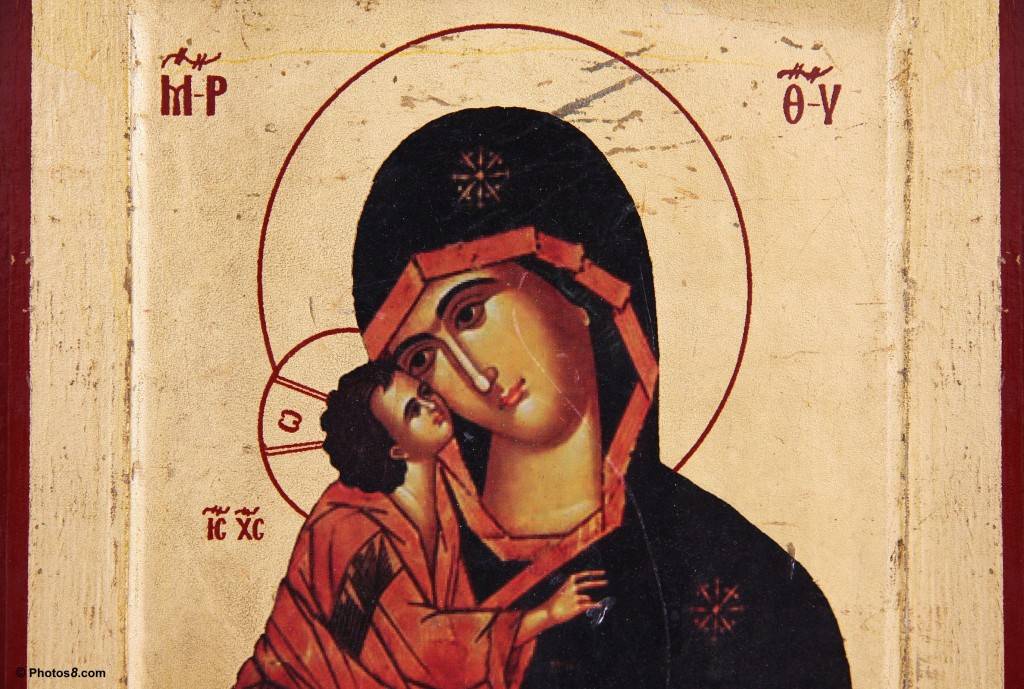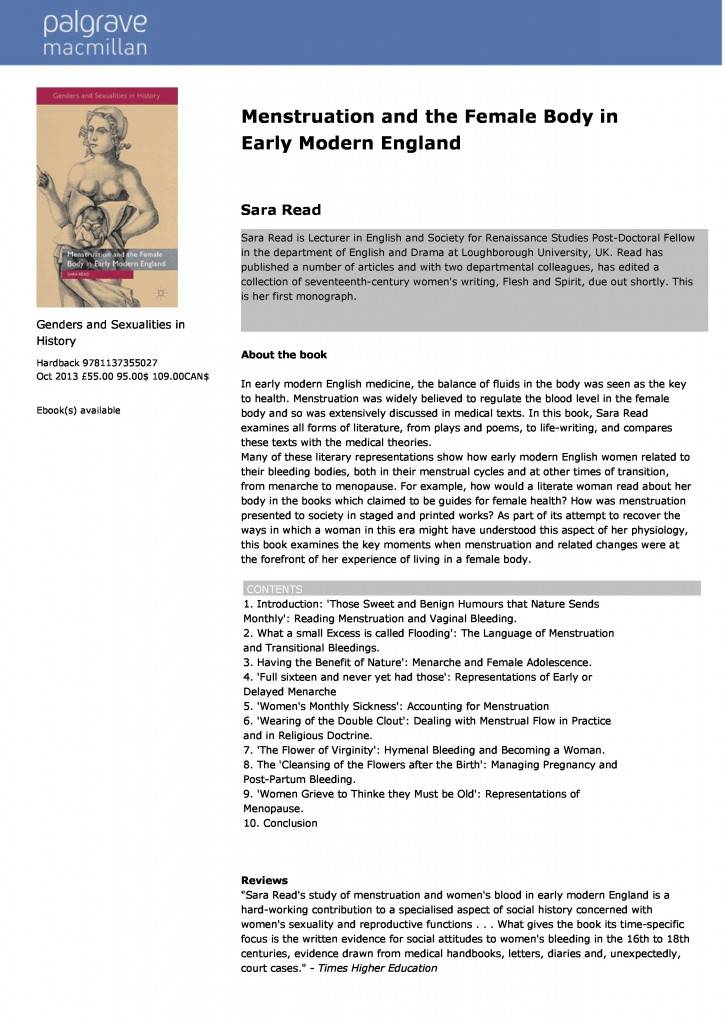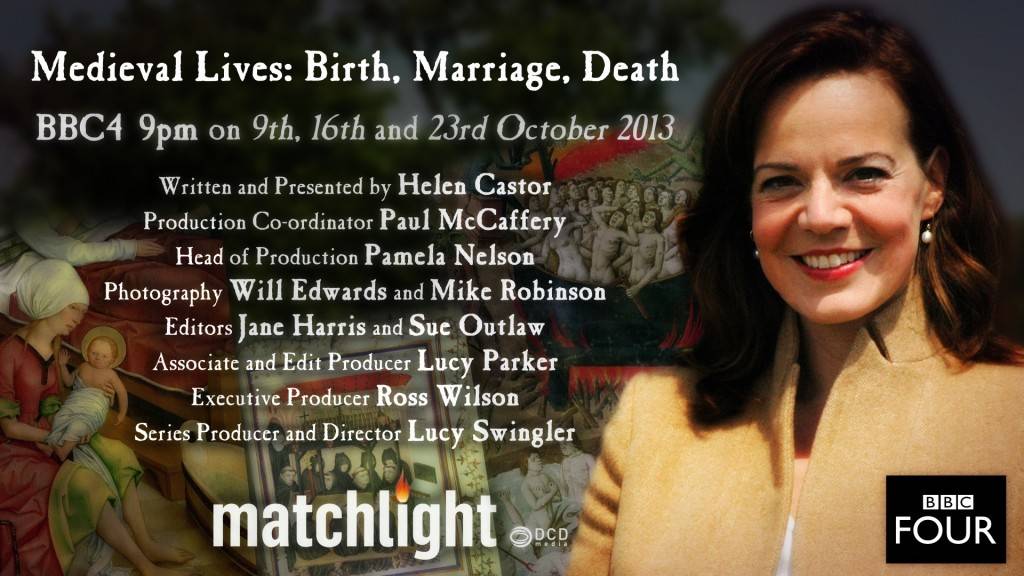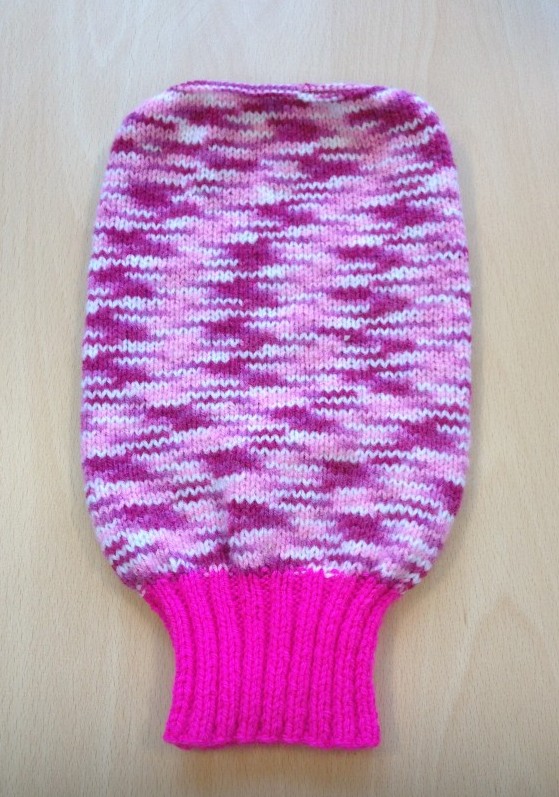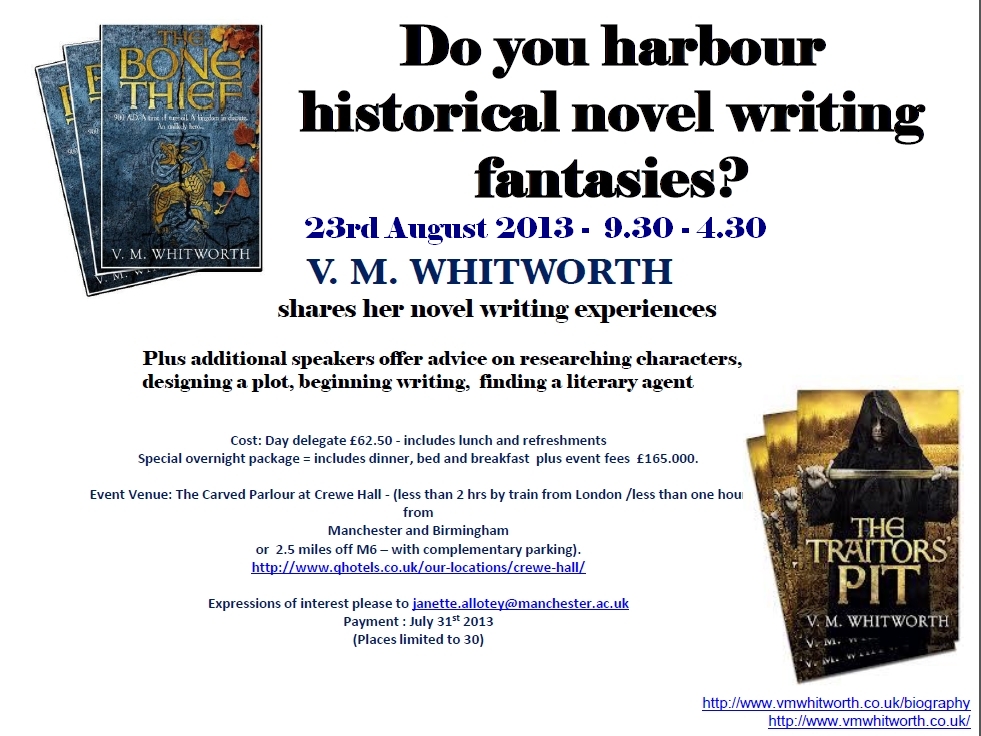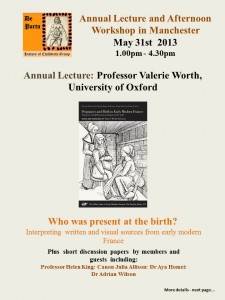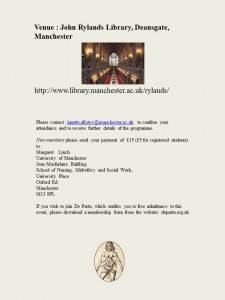New resources
Reading and talking about ‘The Woman’s Book’ in Renaissance England
Medical Humanities Sheffield is proud to launch a series of open interdisciplinary lectures, for students, staff and the public.
WEDNESDAY 26 February – 6 p.m. Firth Hall
Professor Jennifer Richards
Reading and Talking about The Woman’s Book in Renaissance England
“Most written knowledge about women’s bodies” in late medieval Europe, argues Monica H. Green, “is to be found in texts composed by male physicians and surgeons, for male physicians and surgeons (or if not for them, then for lay male patrons).” This paper sets out to test this claim, exploring the reception of one popular vernacular book, Thomas Raynalde’s The Birth of Mankind; otherwise named The Womans Booke (1545-1652). There is evidence of male readers annotating their copies of this book. One annotated copy (1565) belonged to the court physician William Ward, and the marginal notes he left behind are revealing: ‘This book in any case is not to be lent [to] anye body’. However, there is also evidence that this book was in fact lent quite widely, including to and by women. This paper will explore this evidence, and try to reconstruct this book’s reading and the discussion of it, not all of which was complimentary…. It will consider what this means for the early history of women’s healthcare and female literacy.
Jennifer Richards is Professor of Early Modern Literature and Culture in the School of English Literature at Newcastle University. She has published books on rhetoric and conversation with Cambridge University Press (2003) and Routledge (2007), and many essays including on the reading of vernacular medical books in the early modern period with Journal of the History of Ideas (2012) and Bulletin of the History of Medicine (forthcoming, 2014). She is currently writing a book on shared reading in early modern England with a Leverhulme Major Research Fellowship, and, with Professor Richard Wistreich, Royal Northern College of Music, she is leading the AHRC Network ‘Voices and Books, 1500-1800’. She is an Associate Editor of the Edinburgh Companion to the Critical Medical Humanities.
Medical Humanities Sheffield
The interface between medicine and science on the one hand, and the arts and social sciences on the other hand, is one of the most exciting and important in modern academic life, offering unrivalled potential for multi-disciplinary work, policymaking, and public life. Medical Humanities Sheffield is sponsoring a series of open lectures in this exciting field.
No need to book ahead. Open to the Public.
Information related to this message is available at http://mhs.group.shef.ac.uk/.
How it became almost mandatory for dads to attend the birth
Times have changed and it is now rare that a man does not attend the birth of his baby, but how did it come to pass and could things ever change back?
BBC News article 14/03/13. by Lucy Wallis
The clinic of the birth: obstetric ultrasound, medical innovation and the clinico-anatomical project
Department of History and Philosophy of Science University of Cambridge
*** The Ninth Cambridge Wellcome Lecture in the History of Medicine ***
Thursday 16 January 2014 at 4.30pm
The clinic of the birth: obstetric ultrasound, medical innovation and the clinico-anatomical project
Malcolm Nicolson (University of Glasgow)
Ultrasonic images of the fetus are now ubiquitous. Like many innovations in medical imaging, the origins of obstetric ultrasound are often located in medical physics and engineering rather than to clinical medicine. I will argue, by contrast, for the crucial role of clinical pathology in the invention of diagnostic ultrasound. Several authors, notably Foucault in The Birth of the Clinic, have described the impact on nineteenth-century medicine of systematic correlation between lesions revealed upon dissection and signs and symptoms observed while the patient was still alive. Laboratory medicine is widely presented as having eclipsed the clinico-anatomical project in the twentieth century. This lecture will show that clinical pathology continued to inspire innovation in medical imaging after 1950. It will also argue that ultrasonic scanning is more like traditional forms of physical examination than is usually assumed.
There will be tea before the lecture, at 4pm, and a drinks reception afterwards, at 6pm.
*** Workshop ***
In addition, at 11.30am the same day Professor Nicolson will lead a discussion of a precirculated paper on James Young Simpson, the practice of gynaecological examination, and the nineteenth-century medical gaze.
Historians of gynaecology and obstetrics enjoy relating tales of the eighteenth-century man-midwife fumbling blindly under bedclothes or petticoats. Such stories serve to mark a vivid contrast between an older, backward form of practice and a reformed gynaecology led by far-sighted men like James Young Simpson, Edinburgh Professor of Midwifery and pioneer of obstetric analgesia. It is assumed that Simpson, as a disinterested scientific clinician, would have had unrestricted access to the bodies of his patients. The removal of prudish hindrances signals how far gynaecology had emancipated itself from a benighted past. However, reading Simpson, it is evident that, in mid century, the practitioner’s ability to examine female patients remained constrained by social conventions. Thus, the extent to which Simpson’s practice represents a complete departure from older modes of gynaecological work has been exaggerated. By the 1850s, the medical gaze had gained only partial and conditional access to the female body.
Regards socio-historiques sur la santé comme problème public
I am pleased to announce the following symposium:
Regards socio-historiques sur la santé comme problème public : don et transplantation d’organes, cancer, sida, dépendance au jeu et santé mentale [Historical and sociological perspectives on health as a public problem: organ donation, cancer, AIDS, gambling addiction and mental health].
This symposium will be held in French, on February 13th, 2014, at the University Institute of the History of Medicine and Public Health at Lausanne, Switzerland.
For any queries, please contact: raphael.hammer@hesav.ch
Best wishes
Raphaël Hammer
University of Health Sciences (HESAV), Institute of Health Research, University of Applied Sciences and Arts, Wester Switzerland (HES-SO)
1011 Lausanne
Switzerland
Raphaël HAMMER, Professeur HES-S2, Av. de Beaumont 21, 1011 Lausanne
t : +41 21 316 81 19
raphael.hammer@hesav.ch
www.hesav.ch
Christmas greetings
New book: Menstruation and the female body in early modern England, by Sara Read
9th annual Interdisciplinary Workshop on Reproduction
The 9th annual Interdisciplinary Workshop on Reproduction at Cambridge will be held on Friday Nov. 15th from 9.00 a.m. – 7.00 p.m. Registrations have unfortunately already closed, but the programme and Twitter coverage may be of interest.
Presentations this year range from oocyte preservation, to the emerging meanings of cells, to the role of motherhood. This year’s aim is to consider how reproduction is constructed and communicated within academic institutions and broader society.
Full programme list
Follow the dialogue on Twitter via the hashtag #Communicatingreproduction
BBC 4 series: Medieval lives: birth, marriage, death
Janette Allotey, Chair of De Partu, was interviewed by Helen Castor for the first programme in the series, which was broadcast on 9th October 2013. It will be available on BBC iPlayer to view or download until October 8th 2013.
De Partu Anuual Lecture 2013
Knit your own womb?
By Helen King (helen.king@open.ac.uk)
It was one of those moments that only happens when academics and practitioners are in the same room…
For about a year, I had been thinking about the history of visual representations of body parts, and had been introducing audiences in the UK and beyond to some of the knitting patterns available to make a womb. On knitty.com, for example, you can find a pattern from the amazing M.K. Carroll which allows anyone with needles and some bright pink wool to make a ‘cuddly’ womb with pipe-cleaner fallopian tubes and ovaries. If you think I’m making this up, look at http://www.knitty.com/ISSUEwinter04/PATTwomb.html
M.K. Carroll took classes in anatomy and physiology which informed her work. But as she points out on the website, her knitted womb is ‘not completely anatomically accurate’. I was interested in two things here. First, the effect of knitting on making body parts look less terrifying and more ‘cuddly’, which is part of a wider movement in contemporary art towards knitting things that one would not normally associate with this medium; for example, cars). Second, the choice of what to include in ‘a womb’. In M.K. Carroll’s womb, tubes and ovaries and cervix are all important, and the cervix needs to ‘look plump (“pouty”, if you will)’.
I mentioned this to the other members of the De Partu network, expecting the usual surprised response. Instead, they were not thrown in the slightest. ‘Oh yes’, they said, ‘we all know about knitted wombs. We have them, and we make them. They are very useful in parentcraft classes. Would you like us to show you our wombs?’
My jaw dropped. And once I saw the wombs, I was even more amazed and delighted. Firstly, because these wombs are not always brightly coloured – in fact, one of the 1960s patterns that was kindly supplied to me by Lynn Balmforth, the librarian of the National Childbirth Trust, makes it explicit that these should be made in neutral, non-scary, colours, to make the effect more ‘acceptable’. Nor are they supposed to be ‘lifelike’. And secondly, because these wombs don’t bother with the ovaries and tubes – irrelevant by this stage of the proceedings! – but focus on the size of the gravid uterus and on the role of the cervix. They are used to show how contractions work and how the cervix dilates. A ball, representing the head, is pushed through the cervix and a ribbon through the external os can be used to control this.
This photograph was sent to me by Sue Tully, who is a Senior Lecturer in Midwifery at Bournemouth University; it gives you the general idea, although this one contravenes the 1960s guidelines on colour schemes! If you have any images of knitted wombs or information on how they were used, I’d love to receive it.
V M Whitworth shares her novel writing experiences
De Partu – Workshop 31st May
Prof Helen King (Open University) is Speaking at the Wellcome on 19 February 2013
Professor Helen King (Open University) 19 February 2013 at 18.00hrs.
‘Agnodice’s First Patient: Gendering Childbirth in Antiquity and Early Modern Europe’.

